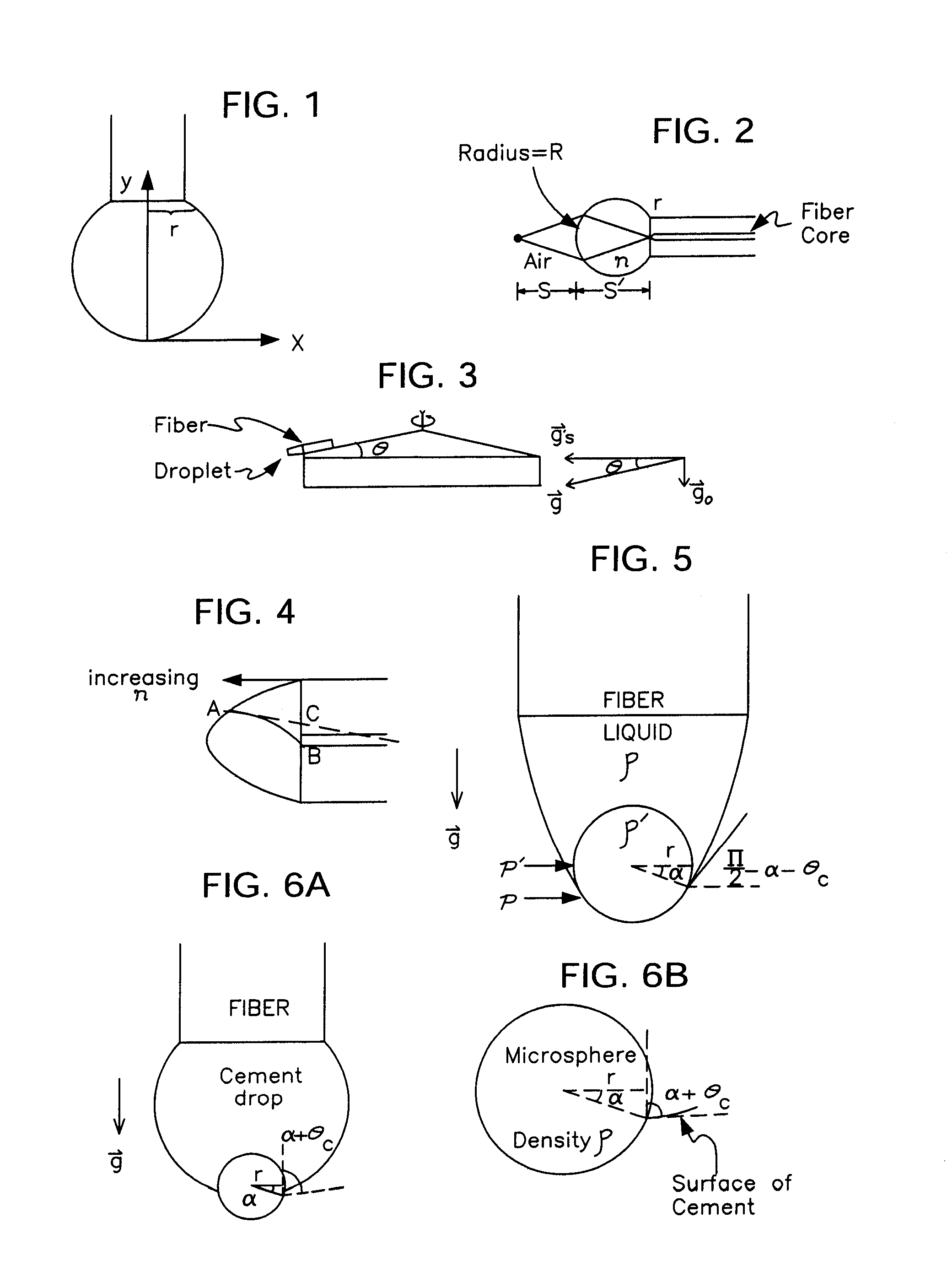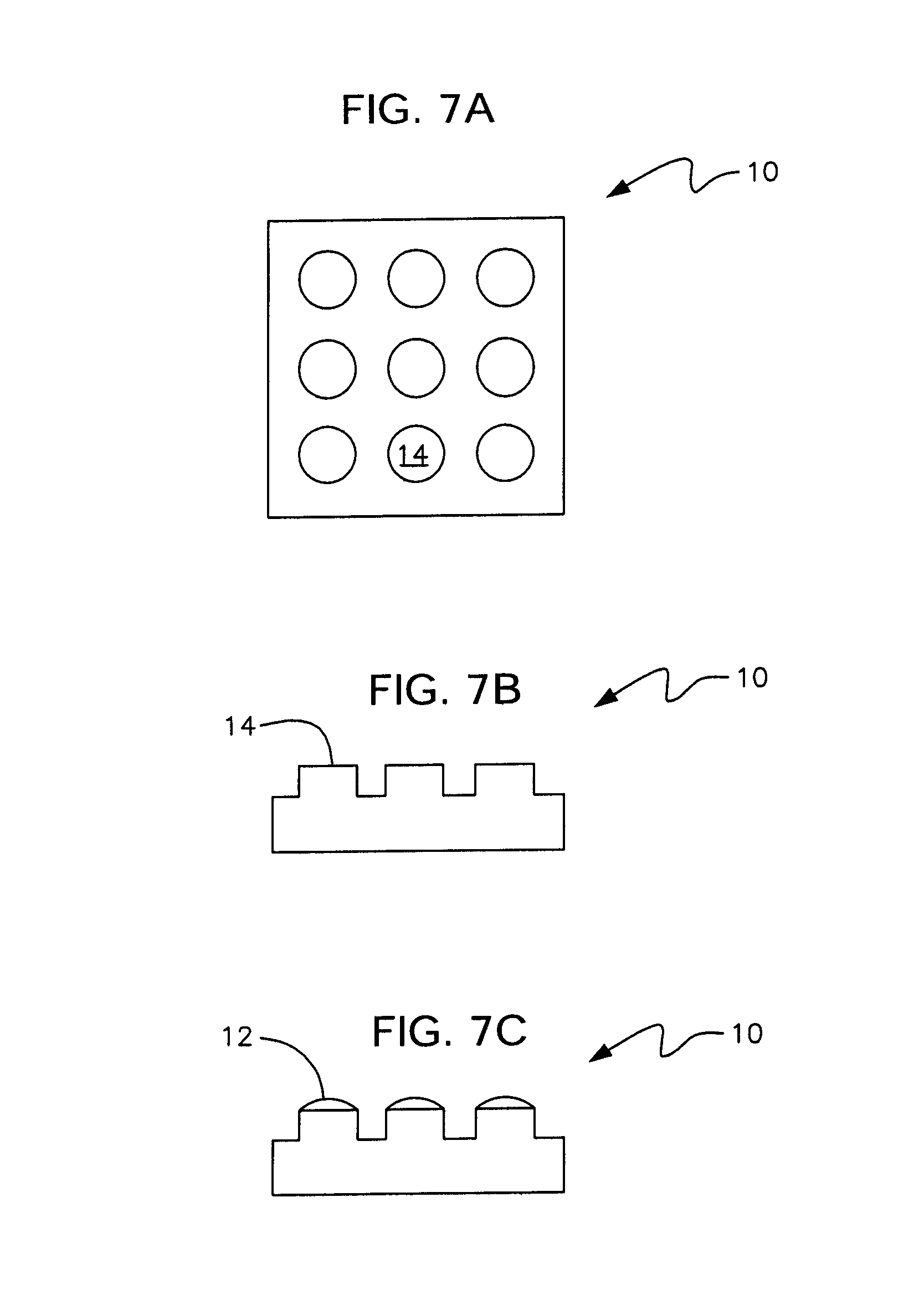Apparatus for forming an array of microlenses under artificial gravity
a microlense and artificial gravity technology, applied in the field of microlense fabrication, can solve the problems of high cost of commercial production of lenses, focus beam, etc., and achieve the effects of low shrinkage upon curing, good thermal stability, and high transparency
- Summary
- Abstract
- Description
- Claims
- Application Information
AI Technical Summary
Benefits of technology
Problems solved by technology
Method used
Image
Examples
first embodiment
[0052]In a first embodiment, the lens material is a droplet of photopolymer, thermoplastic, sol-gel, or the like and is applied to a preselected end of a rod or fiber. The lens material is selected from the group of suitable lens materials having a large refractive index, high transparency, low shrinkage upon curing, good thermal stability, and ease of curing while centrifuged. The optical fiber is cleaved at a preselected end and the coating of optical fiber is removed with a stripping agent. The droplet is applied at the cleaved end and the optical fiber and droplet are placed in an artificial gravitational acceleration.
[0053]The shape of the liquid drop is found from Laplace's formula:
[0054]1R1+1R2+gρyα=const.(equation1)
[0055]where R1 and R2 are the principal radii of curvature, g is gravitational acceleration, ρ is the density of the liquid, and α is the surface tension coefficient for the liquid. When the capillary constant
[0056]a=2αgρ[0057] is much larger than the dim...
second embodiment
[0072]In the invention, the refractive index of the polymer or sol-gel is increased by mixing in high refractive index nanoparticles formed of a transparent material such as Ti2 O3. This also enables producing a microlens with a graded refractive index along the optical axis through centrifugation as depicted in FIG. 4.
[0073]Solid line AB indicates a bent ray as a result of the graded index, and dashed line AC is a straight line the ray would follow without the gradient.
[0074]Positioning Of Microsphere At End Of Optical Fiber By Artificial Gravity
third embodiment
[0075]In a third embodiment, a microsphere is attached to the end of an optical fiber by using an optical cement for the purpose of focusing the light coming out of the fiber. The focusing properties of the microsphere depend on the thickness of the cement in between. The novel technique of this invention allows the controlled positioning of the microsphere by applying an artificial gravitational acceleration to the fiber / microsphere assembly before the cement is cured.
[0076]When a fiber tipped with a liquid containing a microsphere is held vertically with the droplet hanging at the bottom, the microsphere protrudes out of the liquid if it has a density greater than that of the liquid, as depicted in FIG. 5. The extent of protrusion depends upon its size and its surface interaction with the liquid, the radius of the fiber, the surface tension of the liquid, etc.
[0077]By balancing the “weight” of the microsphere with the buoyant force of the liquid and the atmosphere outside, to have...
PUM
| Property | Measurement | Unit |
|---|---|---|
| contact angle | aaaaa | aaaaa |
| gravitational acceleration | aaaaa | aaaaa |
| density | aaaaa | aaaaa |
Abstract
Description
Claims
Application Information
 Login to View More
Login to View More - R&D
- Intellectual Property
- Life Sciences
- Materials
- Tech Scout
- Unparalleled Data Quality
- Higher Quality Content
- 60% Fewer Hallucinations
Browse by: Latest US Patents, China's latest patents, Technical Efficacy Thesaurus, Application Domain, Technology Topic, Popular Technical Reports.
© 2025 PatSnap. All rights reserved.Legal|Privacy policy|Modern Slavery Act Transparency Statement|Sitemap|About US| Contact US: help@patsnap.com



